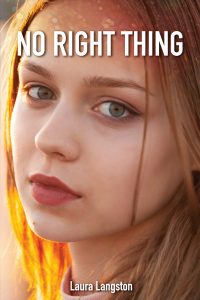
I recently came across a saying attributed to Confucius: ‘The green reed which bends in the wind is stronger than the mighty oak that breaks in the storm.’
It made me think of resilience. A few days after I saw the quote, I had a coffee date with a writer friend. We’ve been friends for decades. We’ve been writing for decades too, both as traditionally published and self-published authors. As we sipped our coffee and discussed the current ups and downs of the industry, she mentioned she was thinking of approaching a small publisher for her next novel. I’m going with Crwth Press, also a small publisher, for my next YA No Right Thing which will be out in April.
With the rules of publishing constantly changing, our ability to adapt and cope is constantly being tested too. And one of the best ways to survive is to develop resilience.
Resilience can be hard to put into words. Ask five people what it is and you’ll probably get five different answers. Even dictionary definitions vary. At its core, however, resilience is the ability to recover from or adjust easily to change or misfortune. Coping with stress (be that good or bad stress) in a positive way is known as resilience. One definition even said that resilience is developed through discomfort, to being exposed to experiences that push or challenge us in a variety of ways.
Well, publishing is made up of experiences that push and challenge us on a regular basis. With that in mind, here are a few tips to help develop resilience.
Remember why you write. Think less about the outcome and embrace the joy of getting words on paper. If you’ve lost that joy, how can you get it back? Maybe you need to fill the well by reading books or stories that spark your creative urge. Focusing on why you write in the first place can keep you writing when you hit a speed bump.
Have good boundaries. We all know the importance of having good boundaries with others, but boundaries extend to social media too. Many writers rely on social media to promote their work and to say engaged with others. How does social media make you feel? Is it helping or hurting you? Do a check in and see if the people/media you interact with leave you feeling energized or depleted. Set boundaries where you need to.
Consider possibilities. We write to get published, at least most of us do. And we have dreams and goals, or we should. But don’t be afraid to think out of the box or try a route previously untraveled. Thinking about potentials – playing ‘what if’ with your writing career – can sometimes lead to surprising opportunities.
Change the narrative. I don’t like the ‘put on the rose-colored glasses’ and ‘things happen for a reason’ mentality. As far as I’m concerned, a rejection is a rejection is a rejection. But sometimes reframing a situation can help. Perhaps the rejections are helping you develop the toughness and drive you need to survive in this industry. Perhaps they’re pointing you in a new direction. Accepting and cultivating a positive approach can help us change the narrative.
Develop social networks. Writers work in isolation by necessity. Many of us are introverts by nature. That’s not a bad thing. We need alone time to incubate our stories and get them written. But we need people too. Find your peeps. They don’t have to be writers. They need to be people who get you, who support you, and who encourage you to be your best self. In an ideal world, they need to be people who also model resilience. People who know how to bend instead of break . . . and who can help you learn to do the same thing.




 Today’s blog continues on last week’s theme of asking other writers to recommend gift books for friends and family. If you missed last week’s recommendations, you’ll find them here.
Today’s blog continues on last week’s theme of asking other writers to recommend gift books for friends and family. If you missed last week’s recommendations, you’ll find them here.  For me, the holidays aren’t the same if I don’t have a new book to read. I always made sure my kids got a new book for Christmas, and even now, as adults, they look forward to the tradition.
For me, the holidays aren’t the same if I don’t have a new book to read. I always made sure my kids got a new book for Christmas, and even now, as adults, they look forward to the tradition. Today is American Thanksgiving and tomorrow is Black Friday. Honestly, I feel like I’ve just lived through a month of Black Fridays. The advertising started weeks back; so did promotions for Cyber Monday.
Today is American Thanksgiving and tomorrow is Black Friday. Honestly, I feel like I’ve just lived through a month of Black Fridays. The advertising started weeks back; so did promotions for Cyber Monday. For writers who don’t write quickly, it can be hard to justify taking a break. Instead, we often push ourselves to write more, while mentally beating ourselves up for not being as prolific as we’d like. However, the research is clear: taking a break from what we’re working on can actually improve productivity. A new and growing body of research outlined in the New York Times shows that strategic renewal – daytime workouts, coffee breaks, time away from the office and longer, more frequent vacations – boosts productivity, job performance and health.
For writers who don’t write quickly, it can be hard to justify taking a break. Instead, we often push ourselves to write more, while mentally beating ourselves up for not being as prolific as we’d like. However, the research is clear: taking a break from what we’re working on can actually improve productivity. A new and growing body of research outlined in the New York Times shows that strategic renewal – daytime workouts, coffee breaks, time away from the office and longer, more frequent vacations – boosts productivity, job performance and health.
Comments